Intro
Discover Norvasc uses and benefits, a calcium channel blocker treating hypertension, angina, and coronary artery disease, offering cardiovascular protection and improved heart health.
The world of medication is vast and complex, with numerous drugs available to treat a wide range of conditions. One such medication that has gained significant attention in recent years is Norvasc, a calcium channel blocker used to treat high blood pressure and angina. High blood pressure, also known as hypertension, is a common condition that affects millions of people worldwide, increasing the risk of heart disease, stroke, and kidney disease. Angina, on the other hand, is a condition characterized by chest pain or discomfort caused by reduced blood flow to the heart. With the rising prevalence of these conditions, it's essential to understand the uses and benefits of Norvasc and how it can help manage these health issues.
The importance of managing high blood pressure and angina cannot be overstated. If left untreated, these conditions can lead to severe complications, including heart failure, coronary artery disease, and even death. Fortunately, medications like Norvasc have been shown to be effective in reducing blood pressure and alleviating angina symptoms. By understanding how Norvasc works and its benefits, individuals can take a proactive approach to managing their condition and improving their overall health. Whether you're a patient or a healthcare provider, it's crucial to stay informed about the latest treatments and therapies available for high blood pressure and angina.
The use of Norvasc has been extensively studied, and its benefits have been well-documented. By blocking calcium channels in the blood vessels, Norvasc helps to relax and widen the vessels, reducing blood pressure and increasing blood flow to the heart. This, in turn, can help to alleviate angina symptoms, such as chest pain and shortness of breath. Additionally, Norvasc has been shown to reduce the risk of heart attack and stroke in individuals with high blood pressure. With its proven efficacy and relatively low risk of side effects, Norvasc has become a popular choice for treating high blood pressure and angina.
Norvasc Mechanism of Action
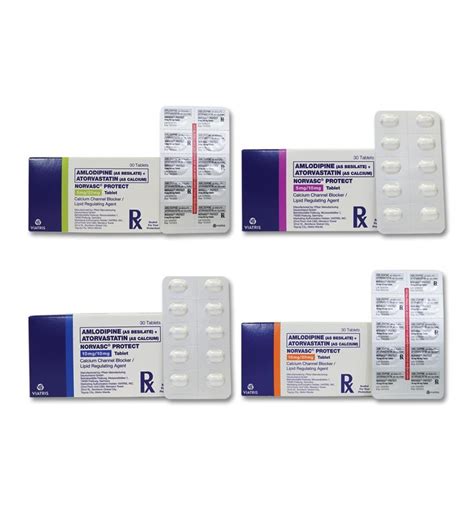
How Norvasc Lowers Blood Pressure
The mechanism of action of Norvasc is complex and involves several pathways. When Norvasc binds to the calcium channels, it reduces the influx of calcium ions into the vascular smooth muscle cells. This reduction in calcium ions leads to a decrease in the contraction of the blood vessels, resulting in vasodilation. Vasodilation, in turn, reduces peripheral resistance and lowers blood pressure. Additionally, Norvasc has been shown to reduce the release of vasoconstrictor substances, such as endothelin-1, which can contribute to increased blood pressure.Norvasc Benefits
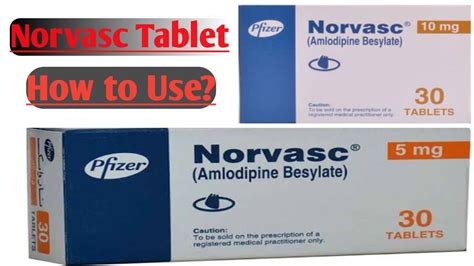
- Reduced blood pressure: Norvasc has been shown to effectively lower blood pressure in individuals with hypertension.
- Alleviation of angina symptoms: By increasing blood flow to the heart, Norvasc can help to alleviate angina symptoms, such as chest pain and shortness of breath.
- Reduced risk of heart attack and stroke: Studies have shown that Norvasc can reduce the risk of heart attack and stroke in individuals with high blood pressure.
- Improved exercise tolerance: Norvasc can help to improve exercise tolerance in individuals with angina, allowing them to engage in physical activity with greater ease.
- Reduced risk of kidney disease: Norvasc has been shown to reduce the risk of kidney disease in individuals with high blood pressure.
Norvasc Side Effects
While Norvasc is generally well-tolerated, it can cause some side effects. Some of the most common side effects include:- Headache
- Dizziness
- Fatigue
- Nausea
- Edema
- Abdominal pain
It's essential to note that these side effects are usually mild and temporary, and they may resolve on their own with continued use of the medication. However, if you experience any severe or persistent side effects, it's crucial to consult with your healthcare provider.
Norvasc Dosage and Administration
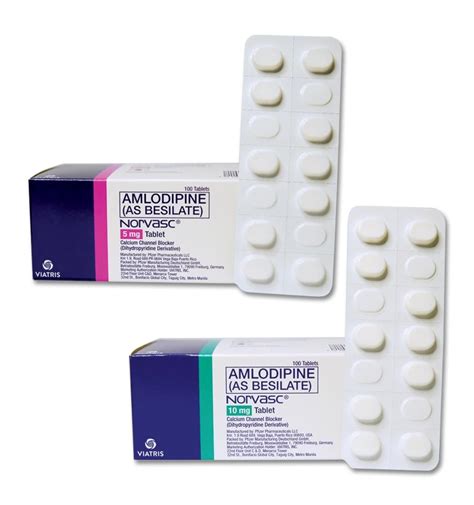
Norvasc Interactions
Norvasc can interact with other medications, including:- Other blood pressure medications
- Cholesterol-lowering medications
- Anti-inflammatory medications
- Antibiotics
- Antifungals
It's crucial to inform your healthcare provider about any medications you're currently taking, including over-the-counter medications and supplements, to avoid any potential interactions.
Norvasc Contraindications
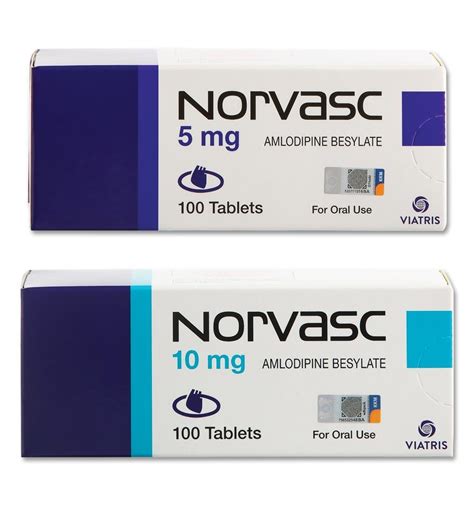
- Those with severe hypotension
- Those with heart failure
- Those with aortic stenosis
- Those with liver disease
- Those with kidney disease
It's essential to consult with your healthcare provider before taking Norvasc, especially if you have any underlying medical conditions or are taking any medications.
Norvasc Warnings and Precautions
Norvasc can cause some warnings and precautions, including:- Hypotension: Norvasc can cause a sudden drop in blood pressure, which can lead to dizziness, lightheadedness, and fainting.
- Edema: Norvasc can cause swelling in the feet, ankles, and hands.
- Increased heart rate: Norvasc can cause an increase in heart rate, which can be a concern for individuals with pre-existing heart conditions.
It's crucial to monitor your blood pressure and heart rate regularly while taking Norvasc and to report any concerns to your healthcare provider.
Norvasc Overdose
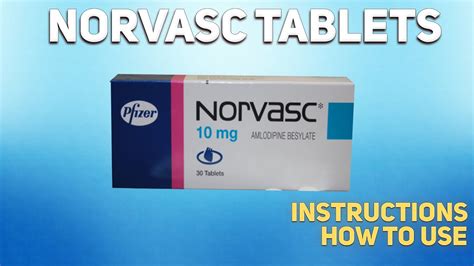
- Severe hypotension
- Dizziness
- Fainting
- Confusion
- Abnormal heart rhythm
If you suspect an overdose, call your local emergency number or the national poison control center at 1-800-222-1222.
Norvasc Storage and Disposal
Norvasc should be stored in a cool, dry place, away from direct sunlight and moisture. It's essential to keep Norvasc out of reach of children and pets. If you need to dispose of Norvasc, consult with your healthcare provider or pharmacist for guidance.Norvasc Patient Assistance Programs
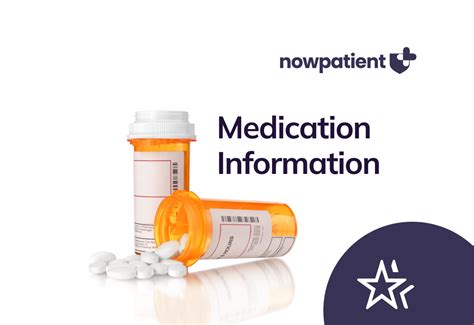
- Pfizer Patient Assistance Program
- Norvasc Patient Savings Program
- Pharmaceutical Research and Manufacturers of America (PhRMA) Medication Assistance Program
It's essential to consult with your healthcare provider or pharmacist to determine if you're eligible for these programs.
Norvasc Clinical Trials
Norvasc has been extensively studied in clinical trials, which have demonstrated its efficacy and safety in treating high blood pressure and angina. Some of the notable clinical trials include:- The Norvasc Clinical Trials Program
- The Pfizer Clinical Trials Program
- The National Institutes of Health (NIH) Clinical Trials Program
These clinical trials have provided valuable insights into the benefits and risks of Norvasc, helping to inform treatment decisions and improve patient outcomes.
What is Norvasc used for?
+Norvasc is used to treat high blood pressure and angina.
How does Norvasc work?
+Norvasc works by blocking calcium channels in the blood vessels, reducing blood pressure and increasing blood flow to the heart.
What are the common side effects of Norvasc?
+Common side effects of Norvasc include headache, dizziness, fatigue, nausea, and edema.
In conclusion, Norvasc is a valuable medication for treating high blood pressure and angina. Its benefits, including reduced blood pressure, alleviation of angina symptoms, and reduced risk of heart attack and stroke, make it an essential treatment option for individuals with these conditions. By understanding how Norvasc works, its benefits, and its potential side effects, individuals can take a proactive approach to managing their condition and improving their overall health. If you have any questions or concerns about Norvasc, consult with your healthcare provider or pharmacist for guidance. Share this article with others who may benefit from this information, and let's work together to promote better health and well-being.
